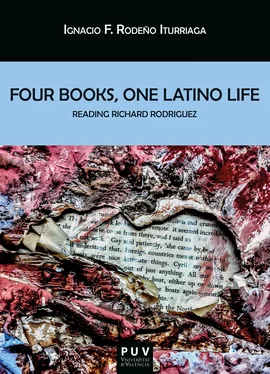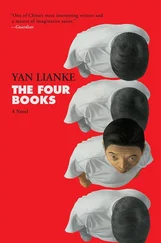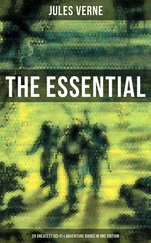After French feminism established how “man” erased “woman,” French and American feminist theory has argued that the very term “woman” has altered, and even eliminated, the historical distinctiveness of many women. Thus, they search for a theoretical apparatus that allows for the affirmation of differences among women as well as of different voices within each individual woman. Françoise Lionnet uses the concept of metissage (248) to address this multiplicity, especially in relation to the postcolonial subject.
These cultural meanings that are assigned to particular bodies affect the types of stories people can tell, as it has been observed in the case of women autobiographers. Something similar happens in the case of the LGBTTQI+ authors. Until the last decades of the 20 thcentury, to speak of sex was to shame oneself. Only males that spoke about heteronormative sexual relationships found some reprieve. Some examples can be found of narratives about sexual encounters by women and LGBTTQI+ subjects, but unless they are confessional autobiographies in which they seek redemption –and even then, they might not be published–, these narratives either reproduced or are read as reproducing the identification of sexual freedom with society’s lower-classes. Thus women, and many men, were self-censoring about their bodies and their sexuality. Studies such as David Jackson’s Unmasking Masculinity: A Critical Autobiography (1990) carries out the double task of critiquing articulations of masculinity as well as reporting his findings on the social construction of his gendered and sexual identity.
Analogous to what happened in the case of life narratives by women, LGBTTQI+ narratives of the self make visible formerly invisible subjects. Oftentimes, these autobiographies are Bildungsromane in which the coming-out experience is recounted. In the majority of cases, LGBTTQI+ subjects address the cost of passing as heteronormative citizens and their efforts to be respected in their chosen sexual identities. In the beginning, these narratives of the self declare that their subjects have neither been represented, nor representable, in autobiographies. Because of this, LGBTTQI+ have been alienated twice when participating in the autobiographical act. This is the reason why they tackle their narratives from the standpoint of someone who speaks from the margins of autobiographical discourse. This raises a particularly conflictive relationship with the reader. Since autobiography is a public utterance, the LGBTTQI+ autobiographer speaks for both: the members of her/his LGBTTQI+ community as well as for the heteronormative subject. However, while addressing the latter, the writer manifests her/his position, and in her/his writing that s/he is conscious of the possible readings that her/his authorial discourse and reputation are subjected to. This way s/he projects onto the reader a series of cultural expectations with regards to the autobiographical narration. The autobiographer reveals the degree of self-consciousness of her/his position as writer who writes from a heteronormative genre through the dialogue with the reader, with that “other” to whom s/he is trying to explain and/or justify her/his life. By paying such attention to the reader, the autobiographer affects a change to the rigid nature of the genre.
Nevertheless, in recent years the texts that deal with sexual awakening have changed, and continue to do so, from an earlier narrative of victimization, loneliness, and secrecy to stories of living within a recognized social group and rejecting a marginalized, stigmatized identity. While feminist collections of essays, usually published by small, independent presses, have served as an archive of lesbian writing – This Bridge Called My Back (1983) by Moraga and Anzaldúa, and Making Face, Making Soul/Haciendo Caras (1990), edited by Anzaldúa come to mind–, new directions in gay life writing came into the literary scene a bit later – Dan Savage’s The Kid (2000) or Augusten Burroughs’ Running With Scissors (2002), among others. LGBTTQI+ autobiographies often develop from a crossroads of identities, for instance Fries’s Body, Remember (2003) intertwines the author’s identities as disabled, Jewish, and gay. This intersection of different identities is also present in the narratives of the self by US Latino authors. For instance, in Eminent Maricones (1999) Jaime Manrique narrates his identity as a gay Latino artist while interconnecting it with the lives of three other prominent Hispanic gay writers: Reinaldo Arenas, Federico García Lorca, and Manuel Puig. The Ortiz Taylor sisters collaborate in their narrative of life Imaginary Parents (1996) by piecing together words and artistic installations. Carmelita Tropicana, the alter ego of Alina Troyano, probes her identity as Latina lesbian performing artist in I, Carmelita Tropicana (2000). Two decades of Latino LGBTTQI+ narratives of the self have challenged prevailing discursive configurations of the non-heteronormative subject. Taking into account the shift in LGBTTQI+ autobiography, this book will discuss how and up to what extent the prevailing discourses are challenged in Richard Rodriguez’s autobiographies.
Blurring the distinction between essay and autobiography: performative identity and the ethical
Autobiography has been defined by the distinction of fiction and non-fiction, as well as by the difference between rhetorical and experiential first-person narration. Yet, such differences are products of culture and as such they might be portrayed differently. As a literary artifact, narratives of the self are also subject to developments in the literary system as a whole. The emergence and disappearance of other genres, as well as the use of new forms of narration, have an effect on autobiography as well. Popular features from earlier times –diaries and epistles, for example– make it possible for narratives of the self to adopt them as a way to express closeness, while textual strategies and structures associated with one particular genre might be appropriated by another –for instance, autobiographies such as the ones analyzed in this book adopt narrative strategies and structures characteristic of the essay. By the same token, when the novel adopted the first-person narrator as a way of granting realism to the plot, its presence alone ceased to be enough to discriminate autobiography from fiction and its use was no longer the prevailing feature in the definition of the genre. Moreover, the use of this autobiographical first-person voice adopted a subjective, less pragmatic, value. Direct observation, eyewitness accounts no longer appear as marked autobiographical features. On the other hand, autobiography has adopted strategies and techniques of other forms of discourse. Such is the case of the apology, which has become almost exclusively associated with the narratives of the self, leaving behind its original functions.
Despite the fact that the diversity of narrative techniques and strategies seem to point towards the notion that there is no intrinsically autobiographical forms, there are some common features that allow us to qualify a given text as autobiography, as it has been established in the previous section. One, the autobiographer is at once author, narrator and protagonist; that is, s/he is the source of the subject matter as well as the supplier of the structure of the text. Two, the events concerning the author are alleged to be truthful: regardless of their public or private nature, the reader is expected to accept the account as true. Three, the autobiographer proclaims to believe in what s/he contends. Regardless of whether the author sporadically breaks these characteristics or not, it is imperative that the reader understands the autobiographer to be responsible for meaning to meet them. As stated before, this is what Philippe Lejeune coined as the “autobiographical pact.” The act of self-imaging and self-evaluation by the author is understood to take place, and it is acknowledged as a kind of self-evaluation. Because readers are conscious of this, any amount and type of revelation, as well as their form of expression become central to the reading of a work perceived and understood as autobiographical. But the narrative of the self is also a construct, and from the manner in which an author manipulates her/his readers, and in the fashion s/he imagines her/his implied readership, the audience can extract inferences about the autobiographer’s interaction with others. Since identity is composed not only by self-perception, but also by our looking at others looking at us, and how we reconstruct and alter those views of the others about us, context is also of significance when reading autobiography.
Читать дальше












